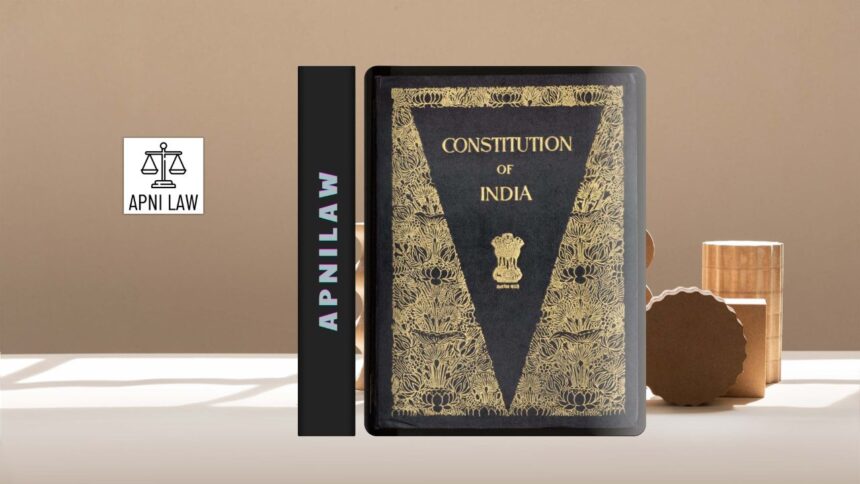What is the Budget Process in the Indian Parliament?
The budget process in India represents a comprehensive system through which Parliament exercises control over public finances. It ensures that government spending and revenue collection follow the principles of accountability, transparency, and legality. The Constitution of India mandates that no money shall be withdrawn from the Consolidated Fund of India without the approval of Parliament. Thus, the budget process is not merely a financial exercise but a instrument of parliamentary oversight on the executive. Every year, the Union Finance Minister presents the Annual Financial Statement, commonly known as the Union Budget, which outlines the government’s estimated receipts and expenditures for the upcoming financial year. The process involves several distinct stages designed to ensure that every rupee of public money is spent with parliamentary sanction and scrutiny.
How Does the Presentation of the Budget Take Place?
The budget process begins with its formal presentation in Parliament. The Union Finance Minister presents the budget in the Lok Sabha, usually on the first working day of February, to give Parliament sufficient time to complete the entire financial process before the new financial year begins on April 1. A copy of the budget is simultaneously laid before the Rajya Sabha. The presentation includes two major parts, the Railway Budget (now merged with the General Budget since 2017) and the General Budget, which covers all other ministries and departments. The budget documents include the Annual Financial Statement, the Finance Bill, and various statements under the Fiscal Responsibility and Budget Management Act. The Finance Minister’s budget speech summarizes the government’s fiscal policy, economic priorities, taxation proposals, and welfare objectives for the coming year.
What Happens During the General Discussion?
After the presentation, the budget undergoes a general discussion in both Houses of Parliament. This discussion provides members with the opportunity to express general views on the budget’s overall policy framework rather than on specific items of expenditure or taxation. Members analyze the direction of fiscal policy, the balance between revenue and expenditure, and the broader economic implications of the proposals. The debate typically lasts three to four days in the Lok Sabha and may continue in the Rajya Sabha, even though the Upper House does not vote on financial matters. The Finance Minister concludes the general discussion by replying to the issues raised, clarifying government policies, and setting the tone for the detailed scrutiny that follows.
How Do Departmental Standing Committees Scrutinize the Budget?
Once the general discussion concludes, the detailed examination of the budget shifts to the Departmental Standing Committees of Parliament. Currently, there are 24 such committees, each corresponding to specific ministries or departments. These committees study the Demands for Grants, which list the detailed expenditure proposals of various ministries. The committees call officials from the concerned ministries to explain and justify their budgetary allocations. They may also consult experts and stakeholders to understand the policy and financial implications of the proposed spending. After in-depth analysis, each committee prepares a report recommending approval, modification, or reduction of particular demands. These reports are then submitted to both Houses of Parliament for consideration. The committee stage plays a vital role in ensuring transparency, efficiency, and accountability in public expenditure, as it allows non-ministerial members to examine government finances in detail.
How Does Parliament Vote on the Demands for Grants?
The Lok Sabha exclusively exercises the power to vote on the Demands for Grants. The Rajya Sabha can discuss these demands but cannot vote on them, as the Constitution grants the Lower House financial supremacy. The Lok Sabha takes up the Demands for Grants for each ministry separately. During this stage, members may move motions to reduce or reject specific grants. Such motions are known as cut motions. There are three main types: policy cut motions, economy cut motions, and token cut motions.
These motions enable members to draw attention to particular aspects of government policy or administrative inefficiency. However, since the government enjoys a majority in the Lok Sabha, such motions rarely succeed in practice. Nevertheless, they serve an important democratic purpose by allowing members to voice criticism and hold the executive accountable. The Lok Sabha must complete voting on all Demands for Grants within a fixed time frame, usually by March 31. Any grants not voted upon due to shortage of time are approved through the “guillotine” procedure, meaning they are put to vote without discussion.
Why is the Appropriation Bill Important?
After the Lok Sabha has voted on all the Demands for Grants, the government introduces the Appropriation Bill. This bill seeks authorization to withdraw funds from the Consolidated Fund of India to meet the approved expenditures. The passage of the Appropriation Bill is a constitutional requirement under Article 114. The bill includes both voted expenditures and charged expenditures, the latter being those that do not require parliamentary approval, such as the salaries of judges or interest payments on public debt. Once passed by the Lok Sabha, the Appropriation Bill goes to the Rajya Sabha, which can only recommend amendments. The Lok Sabha has the final authority to accept or reject these recommendations. The bill then receives Presidential assent, after which it becomes the Appropriation Act. Only then can the government withdraw money from the Consolidated Fund, ensuring that no expenditure occurs without legal sanction.
How is the Finance Bill Passed and What is Its Role?
Following the Appropriation Bill, the Finance Bill is introduced and passed to give effect to the government’s taxation and revenue proposals. This bill contains all legislative measures related to the imposition, abolition, remission, or regulation of taxes. Like the Appropriation Bill, the Finance Bill is a Money Bill and thus originates only in the Lok Sabha. The Rajya Sabha may recommend changes within 14 days, but the Lok Sabha has discretion to accept or reject them. Once both Houses complete their procedures and the President gives assent, the Finance Bill becomes the Finance Act. It legalizes the government’s proposals for raising revenue, thus completing the budgetary process by balancing the income and expenditure sides of the national account.
How Does Parliamentary Control Ensure Accountability?
The budget process is fundamentally designed to ensure that the executive remains accountable to the legislature. Through debates, committee examinations, and voting, Parliament exercises control over how public money is collected and spent. This system prevents arbitrary financial decisions by the government. The annual audit by the Comptroller and Auditor General of India (CAG) provides an additional layer of oversight by examining whether expenditures have been made in accordance with parliamentary approval. The reports of the CAG are examined by the Public Accounts Committee, which further strengthens fiscal accountability. Together, these mechanisms ensure that Parliament retains supremacy over the nation’s financial management and that the executive operates within constitutional and legal boundaries.
How Does This Process Reflect India’s Democratic and Federal Structure?
The Indian budget process mirrors the democratic ethos of parliamentary government. It provides opportunities for representatives to debate, scrutinize, and question financial policies, ensuring transparency and responsiveness. Moreover, India’s federal structure ensures coordination between the Union and State budgets. The Finance Commission periodically recommends the distribution of revenues between the Union and the States, ensuring fiscal balance and equity. Thus, the parliamentary budget process serves not only as an instrument of control but also as a mechanism of cooperative financial governance.
Why Is the Budget Process Central to Good Governance?
The efficiency and integrity of the budget process reflect the overall health of democratic governance. It ensures that financial decisions are not made behind closed doors but are subjected to open debate, expert scrutiny, and legislative sanction. It helps align financial planning with policy objectives, ensures proper resource allocation, and prevents misuse of public funds. Through the six main stages—presentation, discussion, scrutiny, voting, appropriation, and passage of the Finance Bill, Parliament maintains comprehensive control over the government’s fiscal operations. This process transforms the budget from a mere financial statement into a vital instrument of policy, accountability, and democratic governance.








